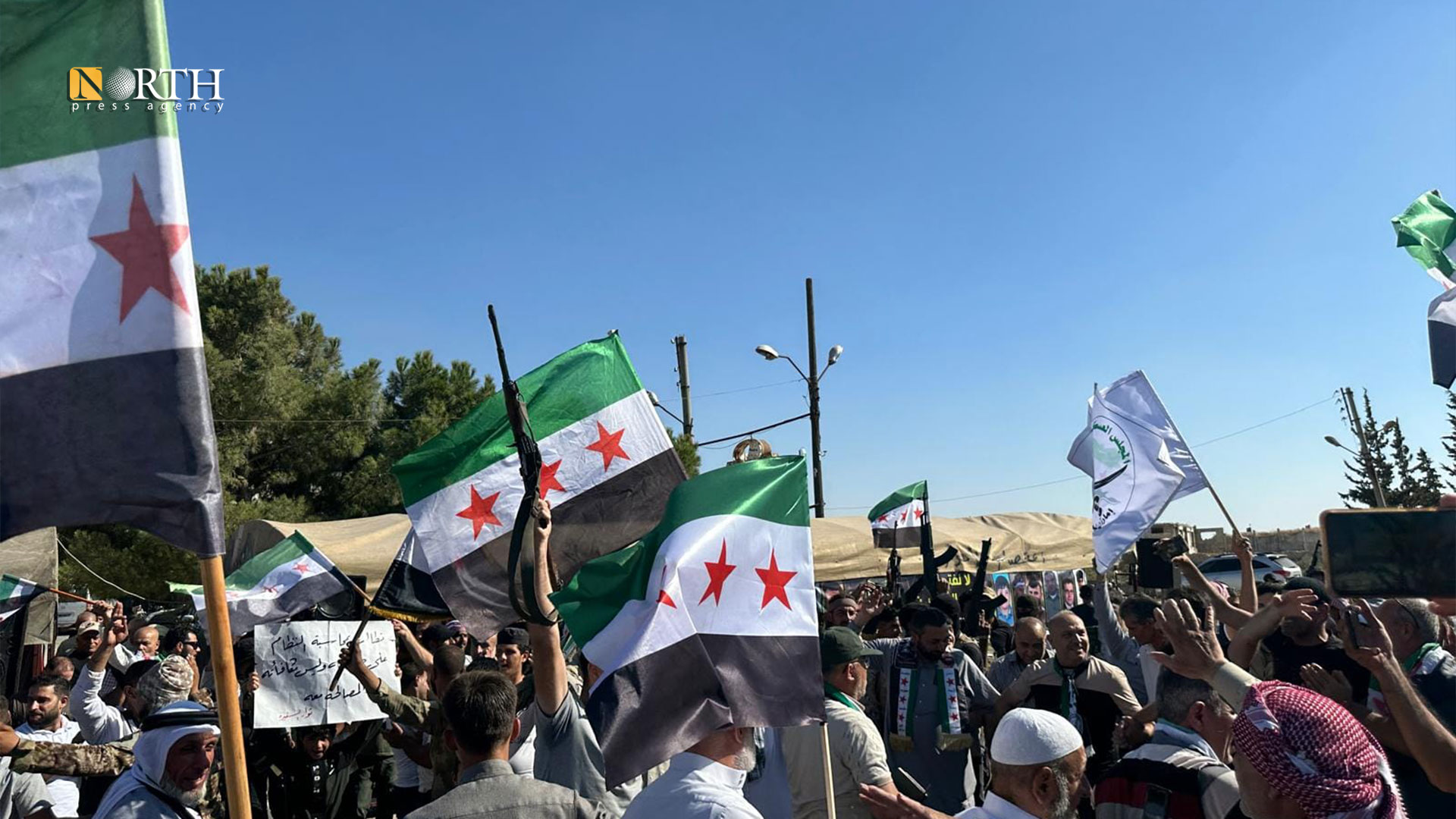
By Hassan al-Muhammad
QAMISHLI, Syria (North Press) – For more than a week, protests have continued in northwestern Syria, where demonstrators are staging sit-ins against the reopening of the Abu Zandain crossing in Aleppo Governorate. Locals fear that the crossing’s opening signals reconciliation between the Syrian government and Turkish-backed armed opposition.
The Abu Zandain crossing sits between areas held by the Turkish-backed Syrian National Army (SNA) and those controlled by the government forces. Recent developments suggest that the crossing, which was opened briefly at the end of June, is a symbol of shifting power dynamics in the region, particularly as Turkey and the Syrian government inch closer to diplomatic ties.
On Aug. 18, North Press reported that a covert meeting took place between Turkish officers and SNA leaders in the northern village of Hawar Kilis in Azaz countryside, northwestern Syria.

The two sides reportedly agreed to reopen the crossing while avoiding large-scale protests. However, just 24 hours after its reopening, the crossing was hit by artillery fire from an unidentified source, forcing it to close again. Protests have since reignited, while military reinforcements are being mobilized in the surrounding areas.
The protests reflect a deep division within the region. In the eastern city of al-Bab, for instance, some demonstrators—believed to be tied to local traders—are pushing for the crossing to reopen for economic reasons, viewing it as vital for commerce.
In contrast, anti-regime protesters in other parts of the region view the crossing as a betrayal of the Syrian “revolution” and a dangerous step toward reconciling with the Syrian government.
The Syrian Interim Government, representing the Turkish-backed opposition, has yet to comment on the crossing’s fate, leaving the situation in limbo. Likewise, the Syrian government has remained silent.
Local sources have suggested that internal conflicts within the opposition are complicating the situation further. Some factions reportedly seek financial incentives in exchange for keeping the crossing open, while others oppose the move, leading to speculation that Turkey may be leveraging protests to maintain control over the area.
Complicating matters further, Iranian-backed militias reportedly oppose the crossing’s reopening, viewing it as a threat to Iran’s influence in the reconciliation process.
Some observers believe these militias could be responsible for the artillery strike that forced the crossing to close, attempting to stall Turkey’s engagement with the Syrian government.
For now, the fate of the Abu Zandain crossing hangs in the balance, as protests, political wrangling, and military tensions continue to shape the situation on the ground.
